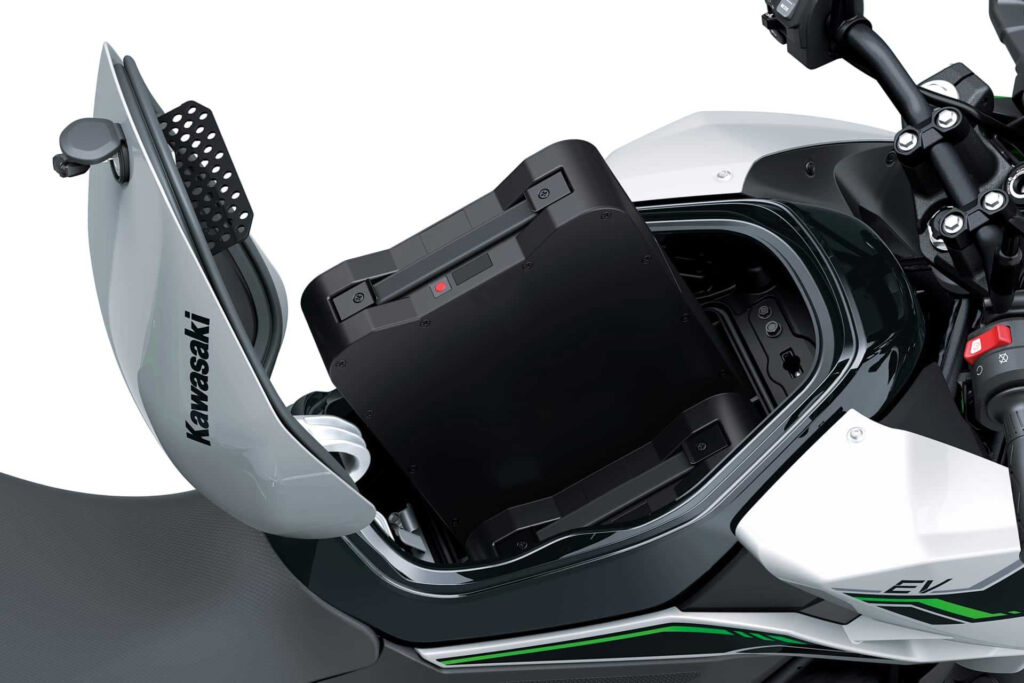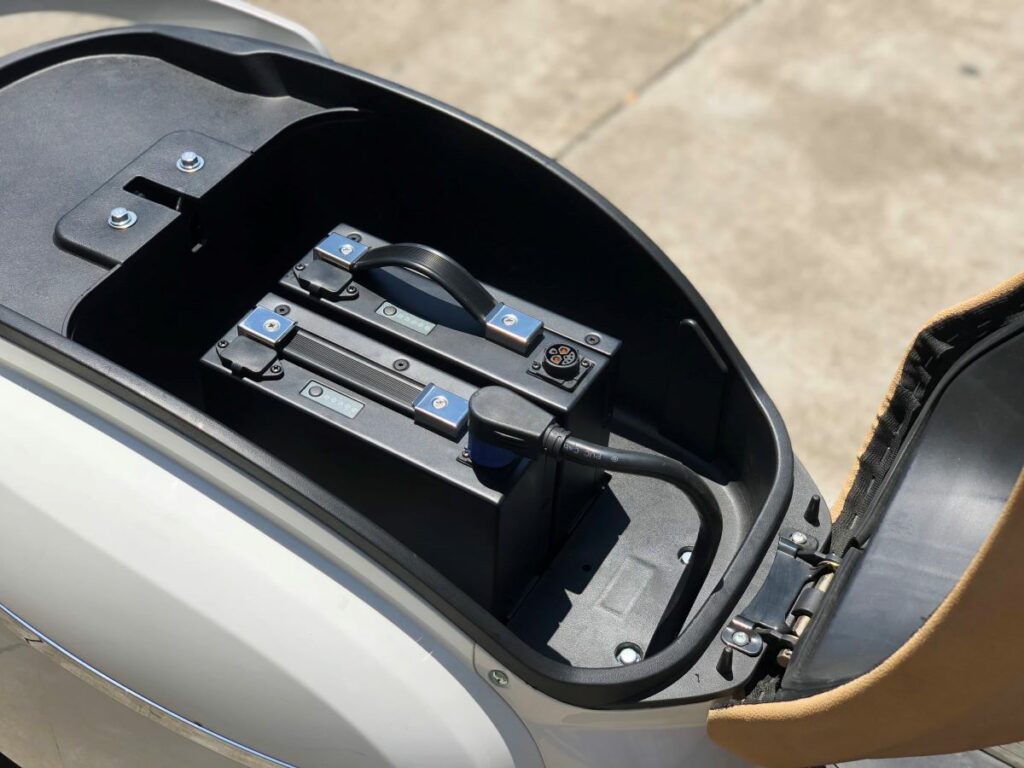Why choose a swappable battery for two-wheelers?
Swappable batteries offer numerous advantages for electric two-wheeler end users:
💡 Ease of use:
Swappable batteries are designed to be easy to remove and replace. Users can take out the battery with just a few simple steps, eliminating the need to find a charging socket and wait for a full recharge.
🕐 Time savings:
The primary advantage of swappable batteries is the time saved. Instead of waiting for a full recharge, users can simply replace the depleted battery with a fully charged one, a process that takes only a few minutes. This can be especially beneficial for users who need to recharge their vehicle frequently due to heavy usage.
🌍 Standardization:
To ensure the widespread adoption of swappable batteries, it is crucial to establish battery, connector, and communication standards between batteries and vehicles. Standardization promotes interoperability, allowing users to switch batteries between different manufacturers.
🔄 Range extension:
Some electric vehicle manufacturers offer options to increase range by adding additional batteries. Users can thus customize the range of their vehicle to suit their needs.
Key players in swappable batteries for two-wheelers
Several European companies already offer swappable batteries, allowing users to easily recharge their vehicles at home or exchange depleted batteries for charged ones at ‘swap’ stations. This approach addresses the issue of limited range for electric two-wheelers.
Many manufacturers, such as Piaggio and Kawasaki, also provide electric two-wheelers with removable and portable batteries that can be recharged off-vehicle at home.
The SBMC to define a universal swappable battery
A European consortium, known as SBMC (Swappable Batteries for Motorcycle Consortium), brings together industry giants like Piaggio, Honda, Yamaha, Triumph, and KTM. Their goal is to establish a standard for interchangeable batteries that can be used by all users, regardless of their electric vehicle’s brand.
This standardization would greatly simplify the battery exchange process at swap stations, enhancing the convenience of electric two-wheelers and providing users with access to a greater number of stations.
Forsee Power: a pioneer in the field of swappable two-wheeler batteries
Forsee Power is at the forefront of this revolution. Our group offers Piaggio and Kawasaki, among others, a portable and swappable battery solution. The lightweight and powerful GO 1.6 Power batteries from Forsee Power, selected by Kawasaki, weigh only 11 kg when two are installed in the vehicle’s housing, providing a 9 kW acceleration that propels you to nearly 100 km/h, defying the competition.
The swappable battery revolution promises to make electric vehicles even more accessible and convenient, providing a clean and efficient alternative to traditional transportation methods. With key players like Forsee Power leading the way in innovation, the future of electric two-wheelers appears bright.


